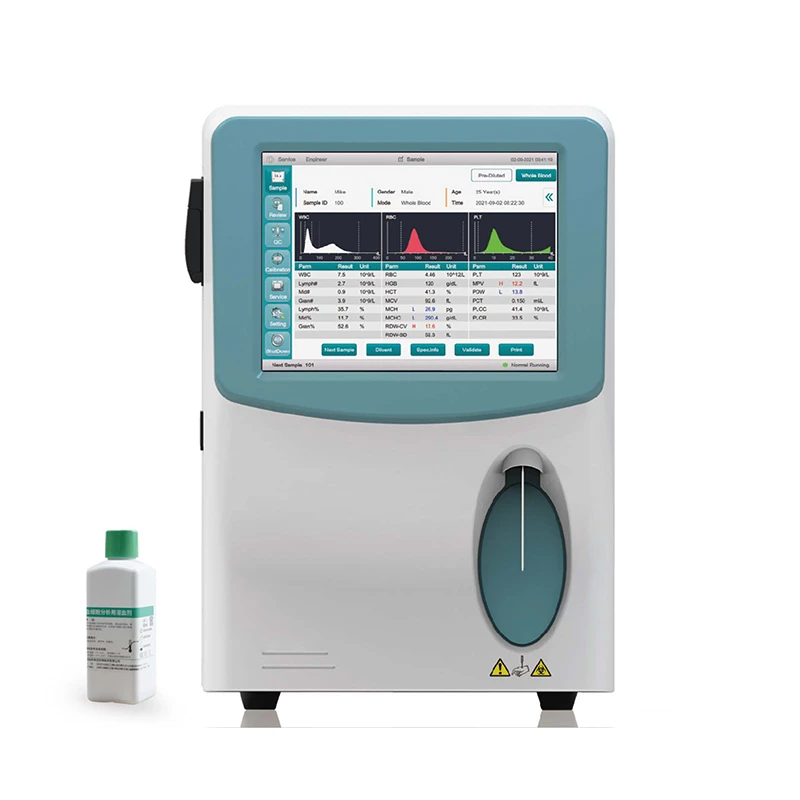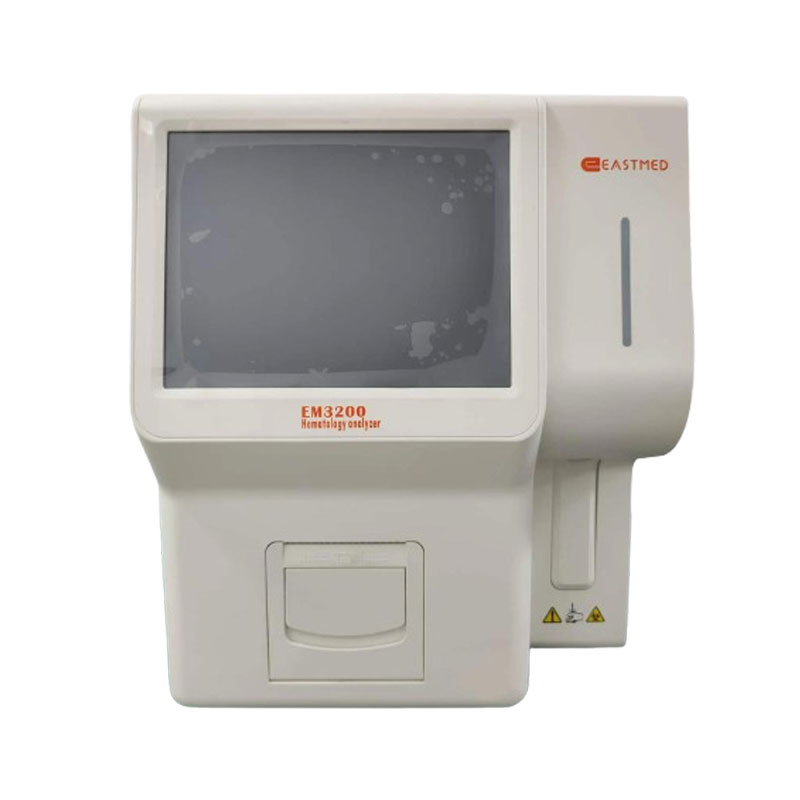EM6100 Hematology Analyzer: Standard Operating Procedure
Key Features:
- High Throughput Capability: Efficiently processes up to 60 samples per hour, boosting lab productivity.
- Advanced User Interface: Equipped with a 10.4-inch color touch screen for easy navigation.
- Minimal Sample Requirement: Uses just 9µl of whole blood for comprehensive tests.
- Extensive Data Management: Stores up to 500,000 results for effective record-keeping and analysis.
- Precision in Diagnostics: Accurately counts blood cells and hemoglobin, supporting reliable diagnostic outcomes.
- Comprehensive Testing Range: Detects up to 21 parameters, enhancing diagnostic capabilities.
- Safety and Reliability: Includes an alarm system for abnormal blood components, improving patient care.
- Technological Sophistication: Identifies internal issues to ensure consistent performance.
- Operational Efficiency: Designed for ease of use, significantly improving medical efficiency and workflow.
Standard Operating Procedure
A. Power Requirements
- Ensure the analyzer is connected to a properly earthed ground.
- Use only the specified type and size of fuse.
- Verify that the input voltage matches the analyzer’s requirements before powering on.
B. Environmental Requirements
- Temperature: Operate within 10℃ to 40℃, with optimal performance between 15℃ and 30℃.
- Humidity: Maintain 20% to 85% non-condensing.
- Atmospheric Pressure: Ensure conditions are within 70 kPa to 106 kPa.
- Conditions: Avoid dust, mechanical vibrations, contamination, loud noises, and strong electromagnetic fields.
- Placement: Install indoors on a level surface away from direct sunlight, heat sources, and drafts. Ensure the environment is well-ventilated.
Operation Guide and Maintenance
- Pre-Startup Check
- Ensure sufficient reagent levels, check for turbidity or deterioration, and confirm that reagent tubes are not bent.
- Verify correct connections to external devices and power source.
- Startup and Login
- If connected to a printer, switch it on first.
- Power on the analyzer using the switch at the back and log in with your credentials at the User Login dialog to access the main interface.
- Background Checking
- The analyzer performs an automatic background test upon startup.
- Verify that background values meet requirements (WBC ≤ 0.210^9/L, RBC ≤ 0.0210^12/L, HGB ≤ 1g/L, PLT ≤ 5*10^9/L, HCT ≤ 0.5%). An ‘Abnormal background’ alarm will trigger if values fail twice. Refer to the troubleshooting chapter for resolution.
- Daily Quality Control
- Run daily QC analysis before processing samples to ensure accurate results. Follow detailed procedures in the QC chapter of the operator’s manual.
- Select Work Mode
- Choose between ‘Whole Blood’ and ‘Pre-diluted’ modes in the ‘Sample Analysis’ interface.
- Enter sample information directly or via sample ID, then save settings by clicking ‘OK’.
- Sample Analysis
- Whole Blood Mode: Mix the sample with EDTAK2 or EDTAK3 anticoagulant, place it under the probe, and press the [aspirate] key for automatic aspiration.
- Pre-diluted Mode: Prepare the diluent in a clean tube using the ‘Dilute’ button. Add 20μL of blood, mix well, and place it under the probe for automatic aspiration.
- Standby Mode
- The analyzer automatically enters standby after a period of inactivity. Perform non-fluidics operations in this mode and exit standby by pressing the [aspirate] key.
- Shutdown
- Click the ‘Shutdown’ button, confirm at the prompt, then turn off the power to the analyzer and any connected devices. Empty and properly dispose of waste from the waste container.
- Troubleshooting
- For errors, click on the error information area at the bottom right of the screen for help, or consult the troubleshooting chapter in the manual.
- Regular Maintenance
- Daily: Perform a normal shutdown and clean the probe.
- Monthly: Clean the external surface and probe block with 75% alcohol.
- Biweekly Inactivity: Use the Pack-up function and turn off the analyzer if not used for more than two weeks.
This streamlined procedure ensures that the EM6100 Hematology Analyzer operates efficiently and continues to deliver reliable results, making it a valuable asset in any clinical setting.
For more information on this advanced CBC blood analyzer and its comprehensive capabilities, or to understand its role in detailed diagnostic processes, please refer to the operator’s manual and relevant documentation.


